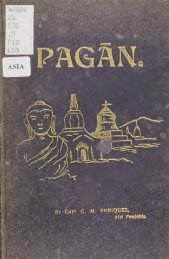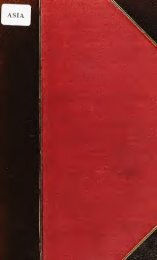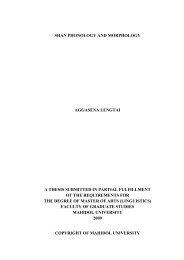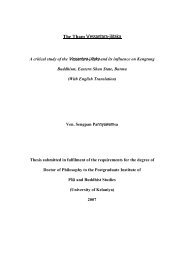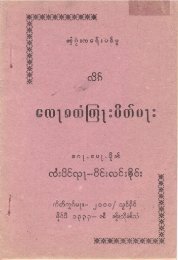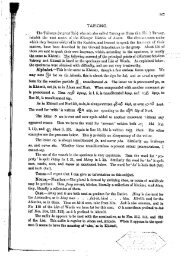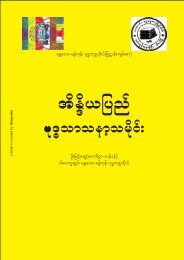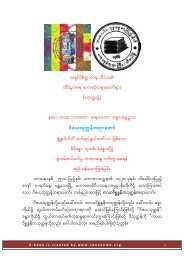The Tai Ahom National Council Memo Scheduling
The Tai Ahom National Council Memo Scheduling
The Tai Ahom National Council Memo Scheduling
Create successful ePaper yourself
Turn your PDF publications into a flip-book with our unique Google optimized e-Paper software.
R. Gurdon in Encyclopaedia of Religion & Ethics, Vol. I, edited by James Hastings,<br />
first impression 1908, 4 th impression 1959, New York, p. 235).<br />
Dr. Sathip Nartsupha of the Chulalongkorn University in Bangkok, who has undertaken a<br />
major project of social and cultural history of the <strong>Tai</strong> people in Burma, southern China and<br />
India, says “these findings suggest that the ancient <strong>Tai</strong> society was an Asiatic type and that<br />
the ancient <strong>Tai</strong> culture revolved around worship of nature and ancestors” and this is<br />
very much true to the <strong>Ahom</strong>, and “<strong>The</strong> <strong>Ahom</strong> worship of nature and ancestors is a belief<br />
system different from Aryan Hinduism”(Sathip Nartsupha and Ranoo Wichasin, “<strong>The</strong><br />
State of Knowledge of <strong>Ahom</strong> History”, in <strong>Tai</strong> Culture, International Review on <strong>Tai</strong> Cultural<br />
Studies, Vol. III, No. 1, June 1998, SEACOM, Berlin, pp. 16-48)<br />
<strong>The</strong> <strong>Ahom</strong> Tribal Socio-Cultural Institutions:<br />
<strong>The</strong> <strong>Ahom</strong> adhered to their traditional tribal institutions like the primo-genitural exogamous clan<br />
system, marriage by chak-long and the pi-nong system.<br />
<strong>The</strong> clan is very basic to the <strong>Ahom</strong> and they maintained their clan system, and clan exogamy in<br />
marriage throughout their ruling history of 600 years and even to this day. “<strong>The</strong> <strong>Ahom</strong>s are<br />
divided into a number of exogamous groups called phoids or khels.” (P.R.T. Gurdon,<br />
Encyclopedia of Religion & Ethics, vol. I, p. 235). That is they have been preserving the clan<br />
institution for the last 780 years in Assam.<br />
A person of a family is primarily recognized and enjoys his place at all levels of<br />
social functions in relation to his clan called tun in <strong>Ahom</strong> (phoid in Assamese). A branch of the<br />
clan is called ruen (ghar in Assamese). It is important to note that in their Buranji or chronicles,<br />
an officer is usually mentioned by his family or clan, and not by his first name. Thus for instance<br />
at page 207 of the <strong>Ahom</strong> Buranji (op. cit) it says “<strong>The</strong>n our Luthuri, one Ladam, the son of<br />
Khuntai, one Mandam Lasam Chaodang Barua of Mungkangia <strong>Ahom</strong> Clan, the Kongar Bara,<br />
one Hu of Lanbakal family and Latum Saikia of Luk-kha-khun family rushed out of the fort to<br />
met the enemies.” In this sentence, the names are qualified by the family names. In many cases<br />
the names are not at all given only the official title and the family name.<br />
<strong>The</strong> <strong>Ahom</strong> never allowed the clan to be lost sight of under any circumstances as a man is<br />
primarily identified with reference to his clan or family. If a person is asked who are it does not




